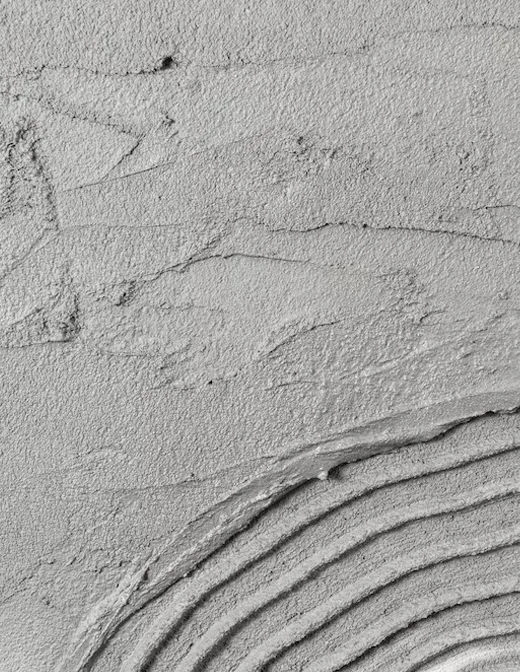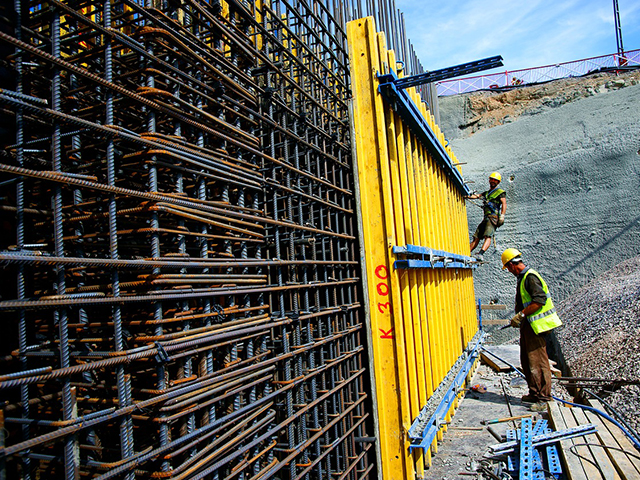Concrete compressive strength refers to the maximum stress that concrete can withstand per unit area before it fails under applied load. This is one of the most fundamental mechanical properties of concrete.
Concrete compressive strength is one of the key criteria used to assess the quality of freshly poured concrete. This strength is crucial in high-rise buildings, bridges, and areas where ground settlement is significant.
Some notable characteristics of concrete compressive strength include:
- It forms the foundation of structural safety.
- It is measured in megapascals (MPa).
- It is influential in determining the concrete class.
- It is affected by material components.
- Curing conditions are a significant factor.
- Concrete strength improves over time.
- It is measured through standard tests.
- It is dependent on environmental conditions.
- It is selected based on the purpose of the structure.
- It serves as a primary indicator of quality control.
What Should Concrete Compressive Strength Be?
Concrete compressive strength is one of the most critical building material properties for ensuring structural safety. This strength determines the loads a concrete structure can bear and varies depending on the building type, load conditions, and environmental factors.
Specific strength classes are used for concrete. For example, C25/30 class is commonly used in residential buildings, while higher strength classes are used in structures such as bridges and dams that bear heavy loads. These classes are designated based on the compressive strength obtained from tests on cube or cylindrical samples.
There are several conditions to consider when determining the appropriate concrete class to be used in structures. These include both the loads the structure will carry and the surrounding environmental conditions. The required strength value must be defined in accordance with static calculations and building codes. To obtain a structure that is resistant to shape deformation and fracture, adherence to these strength criteria is essential.
These tests are typically conducted after a 28-day curing period. The measurement methods reflect the concrete’s final strength. During this 28-day period, water, cement, and aggregate combine and harden, thereby giving the material its strength. However, this strength is not solely dependent on curing time. Cement, aggregate, chemical admixtures, the water-cement ratio, and practices during concrete placement also play a role. In other words, many variables influence concrete strength.
Considering all these factors, the correct class selection, appropriate production process, and high-quality materials must be evaluated together.

Factors Affecting Concrete Compressive Strength
The factors affecting concrete compressive strength are as follows:
- Water/Cement Ratio: Excessive water reduces strength, whereas a low water/cement ratio results in higher strength.
- Type and Quality of Cement: The type of cement affects the hydration rate and strength development.
- Aggregate Properties: The type, size, surface texture, and cleanliness of the aggregate directly affect the internal structure and strength.
- Chemical Admixtures: Water-reducing or air-entraining admixtures directly affect workability and strength.
- Mix Proportions: Proper adjustment of mix components is crucial. Imbalanced ratios can reduce homogeneity and strength.
- Placement of Fresh Concrete: Concrete should be properly compacted to avoid voids.
- Age of Concrete: The first 28 days are critical. Insufficient curing during this period leads to low strength.
- Ambient Temperature and Humidity: Extremely hot or cold conditions adversely affect setting time and strength gain.
- Homogeneity of Concrete: Inadequate mixing of material components can lead to strength variation across different parts of the structure.
How Is Concrete Compressive Strength Calculated?
What is concrete compressive strength and how is it measured? This is a key question in engineering applications, as it relates to the structural integrity of a building. Concrete compressive strength is measured by applying pressure to standard cube or cylinder samples.
During the measurement process, samples are prepared as 150 mm cubes and cured for 28 days under proper moisture and temperature conditions. Then, using a compression testing machine, the sample is compressed until failure, and the maximum load at failure is recorded to calculate the compressive strength.
This value is calculated by dividing the load by the surface area, and is expressed in MPa. The strength is not only affected by testing, but also by factors that influence strength during the production process. For example, the water-cement ratio in samples taken from fresh concrete significantly affects porosity and compressive strength. Other influencing factors include aggregate type, particle size distribution, and admixtures.
An ultrasonic test device can also be used in the field as an alternative method to measure estimated strength without damaging the concrete. However, this method is primarily used for general evaluations and cannot replace laboratory tests.
For detailed information on concrete compressive strength and how it is calculated, you can contact Gürbüz İskele.






